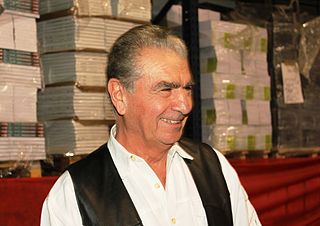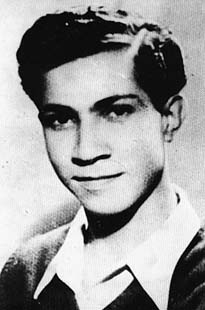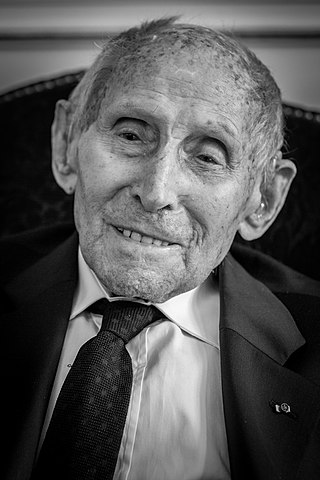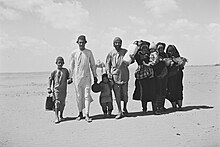In the 20th century, approximately 900000 Jews migrated, fled, or were expelled from Muslim-majority countries throughout Africa and Asia. Primarily a consequence of the 1948 Arab–Israeli War, the mass movement mainly transpired from 1948 to the early 1970s, with one final exodus of Iranian Jews occurring shortly after the Islamic Revolution in 1979–1980. An estimated 650000 (72%) of these Jews resettled in Israel.

Yitzhak Shamir was an Israeli politician and the seventh prime minister of Israel, serving two terms. Before the establishment of the State of Israel, Shamir was a leader of the Zionist militant group Lehi, also known as the Stern Gang.

Michael Bar-Zohar is an Israeli historian, novelist and politician. He was a member of the Knesset on behalf of the Alignment and Labor Party in the 1980s and early 1990s.
David Gerald Littman was a British Jewish activist best known for organising the departure of Jewish children from Morocco when he was 28. He then worked as a lobbyist at the United Nations in Geneva and was also an historian. He was married to Bat Ye'or.

Meir Amit was an Israeli politician and cabinet minister. He served as the Chief Director and the head of global operations for Mossad from 1963 to 1968, before entering into politics and holding two ministerial positions. He was also widely regarded as the most successful intelligence officer and a leading political figure for Israel.
The Mossad LeAliyah Bet was a branch of the paramilitary organization Haganah in British Mandatory Palestine, and later the State of Israel, that operated to facilitate Jewish immigration to British Palestine. During the Mandate period, it was facilitating illegal immigration in violation of governmental British restrictions. It operated from 1938 until four years after the founding of the State of Israel in 1952. It was funded directly by the American Jewish Joint Distribution Committee, and was not subject to the control of the Jewish Agency who operated their own Aliyah department headed by Yitzhak Rafael.

Nativ, or officially Lishkat Hakesher or The Liaison Bureau, is an Israeli governmental liaison organization that maintained contact with Jews living in the Eastern Bloc during the Cold War and encouraged aliyah, immigration to Israel.

Moshe Barazani, also Barzani was an Iraqi-born Kurdish Jew and a member of Lehi underground movement in pre-state Mandate Palestine during the Jewish insurgency in Palestine. He is most notable for having died by suicide with a hand grenade together with Meir Feinstein, another Jewish underground fighter under sentence of death, shortly before their scheduled executions, and is memorialized in Israel today as one of the Olei Hagardom.

The Institute for Intelligence and Special Operations, popularly known as Mossad, is the national intelligence agency of the State of Israel. It is one of the main entities in the Israeli Intelligence Community, along with Aman and Shin Bet.
Events in the year 1996 in Israel.
Operation Yakhin was an operation to secretly emigrate Moroccan Jews to Israel, conducted by Israel's Mossad between November 1961 and spring 1964. About 97,000 left for Israel by plane and ship from Casablanca and Tangier via France and Italy.
Egoz was a ship that carried Jewish emigrants from Morocco to Israel, at a time when the immigration of Moroccan Jews to Israel was illegal under Moroccan law. The ship operated undercover, and gained fame after sinking on 10 January 1961, which resulted in the loss of 46 lives, 44 of them immigrants.

The migration of Moroccan Jews to Israel has been made all over the centuries. Moroccan Jews in Israel have been the founders of many pioneer neighborhoods in Jerusalem, Tel Aviv, Haifa, Tiberias and others.

The State of Israel and the Kingdom of Morocco formally established diplomatic relations in 2020, when both sides signed the Israel–Morocco normalization agreement in light of the Abraham Accords. While official ties had previously not existed due to the Arab–Israeli conflict, the two countries maintained a secretive bilateral relationship on a number of fronts following the 1948 Arab–Israeli War. For many years, Moroccan king Hassan II facilitated a relationship with Israeli authorities, and these ties are considered to have been instrumental in stabilizing Morocco and striking down possible anti-monarchy threats within the country. The Israeli passport is accepted for entry into Morocco, with a visa granted on arrival. With the bilateral normalization agreement in December 2020, Morocco officially recognized Israeli statehood. Almost three years later, in July 2023, Israel officially recognized Moroccan sovereignty over Western Sahara.
Moroccan Jews in Israel are immigrants and descendants of the immigrants of the Moroccan Jewish communities who now reside within the state of Israel. The 2019 Israeli census counts 472,800 Jews born in Morocco or with a Moroccan-born father, although according to the World Federation of Moroccan Jewry, nearly one million Israeli Jews are Moroccan or of Moroccan descent, making them the second-largest community in the country.

The David Amar Worldwide North Africa Jewish Heritage Center is a cultural centre and museum in Jerusalem, that opened in 2011.

David Amar (1920–2000) was a Moroccan businessman, leader of the Moroccan Jewish community, politician, and philanthropist.

Georges Loinger was a French soldier during World War II. During his time in the French Resistance, he helped hundreds of Jewish children escape from occupied France to Switzerland.
In 1999, the Intelligence Ministry of Iran arrested 13 Iranian Jews, accusing them of spying for Mossad. Security agents arrested 13 Jewish residents of the Iranian cities of Shiraz and Isfahan, including five merchants, a rabbi, two university professors, three teachers in private Hebrew schools, a kosher butcher and a 16-year-old boy, accusing them of spying for Israel. After a trial in Islamic Revolutionary Court, 10 were sentenced to 4–13 years in prison. The Israeli government and many U.S. Jewish groups and Jewish federations worldwide organized a pressure campaign globally against the Government of Iran, with demonstrations in front of Iranian embassies worldwide.











